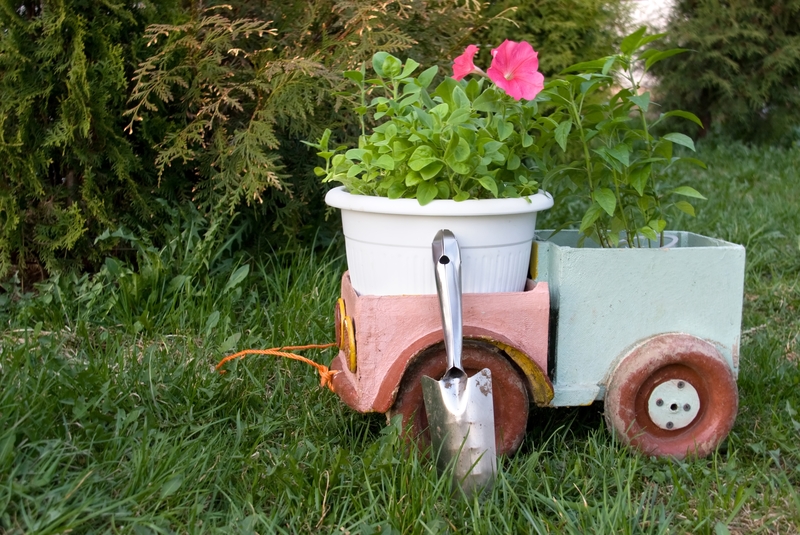Clean Up Your Clutter and Conquer Hoarding Challenges Today
Looking to clean up your clutter and conquer hoarding challenges? If you've ever found yourself overwhelmed navigating stacks of possessions, or stressed by messy areas in your home, you're not alone. Clutter accumulates for many reasons and can take a toll on both our physical space and mental wellbeing. Through this comprehensive guide, you will discover practical, effective steps to reclaim your space, break free from hoarding behaviors, and support a healthier, happier lifestyle.

Understanding Clutter and Hoarding - Why It Happens
Before tackling the mess, it helps to understand the differences between clutter and hoarding, as well as what causes these challenges.
- Clutter: A common accumulation of items, often due to lack of organization or time. Clutter is typically surface-level and can be addressed with habitual tidying and organizational strategies.
- Hoarding: A more complex behavioral pattern where individuals find it extremely difficult to discarding possessions, regardless of their actual value. Hoarding often leads to significant distress or impairment in daily life.
Why Do People Accumulate Clutter?
There are various reasons for clutter and hoarding behaviors, including:
- Emotional attachment to items, fearing regret after discarding.
- Perceived utility: Keeping things "just in case."
- Overwhelm from the magnitude of things to sort through.
- Mental health concerns such as anxiety, depression, and ADHD.
- Lack of organization systems in place to manage daily items.
Understanding your motivation can help you address the root cause, making it easier to maintain a tidy, comfortable environment.
The Life-Changing Benefits of Decluttering and Beating Hoarding Tendencies
- More space for living, creativity and relaxation.
- Reduced stress and improved mental clarity.
- Enhanced safety by eliminating tripping hazards and fire risks.
- Improved productivity and focus in your daily life.
- Better physical health due to fewer allergens and dust.
- Increased pride in your home and less embarrassment.
Small steps towards controlling clutter and hoarding can make a big difference, transforming your home and mindset.
Proven Steps to Clean Up Clutter and Overcome Hoarding Challenges
1. Commit to Positive Change
A successful journey to conquer hoarding challenges and reduce clutter starts by making a commitment to improving your living space. Recognize how clutter affects you emotionally and physically, and visualize the benefits of a clutter-free home. Set clear intentions, such as "I will spend 30 minutes each day organizing my space."
2. Assess the Problem Areas
Walk through your home, making note of the worst clutter zones. Take photos to get a fresh perspective. Create a list of areas to tackle, such as:
- Living room surfaces
- Closets overflowing with clothing
- The kitchen with unused gadgets
- The garage or basement packed with old boxes
By identifying specific problem spots, you can prioritize and avoid feeling overwhelmed.
3. Set Realistic Goals and Timelines
Decluttering and overcoming hoarding is a process, not a sprint. Break large projects into smaller, achievable tasks. For example:
- This week: Clear out the kitchen counters
- Next week: Sort through the front closet
- By month's end: Donate or dispose of unused household items
Celebrate your progress rather than focusing only on what's left to do! Consistency is key.
4. Gather Needed Supplies
Prepare by collecting:
- Sturdy garbage bags for trash and recycling
- Sorting boxes (keep, donate, sell, relocate, recycle)
- Cleaning supplies for wiping down emptied surfaces
- Permanent markers and labels to avoid confusion
5. Decluttering Made Easy: The Room-by-Room Approach
A methodical search through one room at a time prevents overwhelm and builds momentum. Here's how to organize and clean up your clutter room by room:
- Living Room: Remove magazines, electronics, and items that don't belong. Store remote controls and organize shelves; dust and vacuum thoroughly.
- Kitchen: Clear expired food, unused appliances, and duplicate utensils. Designate zones for specific items.
- Bedrooms: Sort the closet, under-bed storage, and dresser drawers. Donate clothes you haven't worn in a year.
- Bathrooms: Dispose of empty bottles and expired personal care products. Use baskets to corral small items.
- Garage/Basement: Group items by use (tools, garden supplies, sports gear), and recycle broken equipment.
6. Apply the Four-Box Method
Transform any space by using the classic Four-Box Decluttering System:
- Keep: Items you use regularly and truly need
- Donate: Items in good condition, but no longer needed
- Sell: Valuable items you're ready to part with
- Trash: Broken or unusable items
Be honest and avoid keeping "maybes." Make decisions based on how each item serves your current lifestyle, not your past or future.
7. Let Go of Emotional Attachments
Many struggle with discarding possessions due to guilt, nostalgia, or fear of loss. Try these tips:
- Take photos of sentimental items before donating or discarding.
- Set boundaries (e.g., one box per family member for keepsakes).
- Remind yourself memories live on even if the object is gone.
Building emotional resilience makes decluttering easier over time.
8. Organize and Store What You Keep
After clearing the clutter, ensure everything you keep has a purposeful home. Invest in:
- Clear bins for visibility
- Shelves and drawer dividers to maximize space
- Labels for easy identification
Good organization helps prevent clutter from returning and makes cleaning up faster.
9. Develop Healthy Habits to Prevent Future Hoarding
Maintaining a clutter-free home is about consistency and setting up systems to simplify your life:
- Daily 5-Minute Pickup: Set a timer to quickly return items to their places each evening.
- One In, One Out Rule: When you purchase something new, let go of something old.
- Paper Management: Go paperless where possible, file or shred mail immediately.
- Regular Donation Days: Schedule monthly drop-offs to your favorite charity.
Building these habits will reduce the temptation to accumulate unnecessary items in the future.
How to Conquer Hoarding Disorder with Compassion
When Is It Hoarding, and Not Just Clutter?
Hoarding disorder is more than a messy house; it's a recognized mental health condition. Signs may include:
- Pervasive difficulty discarding possessions
- Severe anxiety or distress at the thought of letting go
- Rooms becoming unusable for their original purpose
- Social isolation or embarrassment about the home
If these symptoms sound familiar, understand that help is available.
Supporting Yourself or a Loved One with Hoarding Issues
- Approach with empathy, not judgment.
- Consider professional counseling or therapy focused on hoarding disorder.
- Encourage small steps, rather than demanding immediate change.
- Research local resources, including support groups or professional organizers familiar with hoarding restoration.
Many who conquer hoarding report significant improvement in mental health, relationships, and physical wellbeing.
Decluttering Resources and Additional Tips
Recommended Tools and Products
- Label makers for quick, easy identification
- Donation boxes by the door as a monthly routine
- Shelving systems for vertical storage and maximizing space
- Organizational apps to track your progress and goals
Decluttering Books and Courses
- The Life-Changing Magic of Tidying Up by Marie Kondo
- Decluttering at the Speed of Life by Dana K. White
- Online courses from NAPO (National Association of Productivity & Organizing Professionals)
Hire a Professional Organizer
If you're overwhelmed, a professional organizer can:
- Help you make decisions about what to keep or toss
- Design tailor-made storage solutions
- Disable clutter triggers and create actionable plans
Success Stories - Real People Who Beat Clutter and Hoarding
Case Study: A Fresh Start After Decluttering
After years of struggling with clutter and hoarding, Julie, a busy single mom, decided she had had enough. With determination, she tackled one area per week, starting with her kitchen counter. Using the four-box method and applying the "one in, one out" rule, she saw steady progress. Within three months, her home transformed from chaotic to calm, and Julie reports feeling more energetic, productive, and proud to invite friends over again.
Case Study: Emotional Healing from Hoarding Behaviors
Michael's battle with hoarding was deeply connected to grief after a loss. With help from a local therapist and a compassionate decluttering coach, he slowly learned to let go of items while keeping memories alive through photos and journaling. Today, Michael enjoys a clutter-free home and engages actively in his community, showing that conquering hoarding challenges is truly possible with the right support.

Overcoming Obstacles: Common Questions About Reducing Clutter and Hoarding
What if I feel overwhelmed by the mess?
Start small. Even 10 minutes a day can make a difference. Remember: progress, not perfection!
How do I motivate family members to participate?
- Lead by example and celebrate small victories
- Gently involve others in specific tasks
- Communicate the benefits for the whole household
Is it okay to keep things I love?
Absolutely! The goal isn't minimalism for its own sake, but a comfortable, functional home. Keep what brings you joy and let go of what no longer serves you.
Your Clutter-Free Journey Starts Now
With the right strategies, compassion, and determination, you can clean up your clutter and conquer hoarding challenges starting today. Focus on taking one small step at a time. Your efforts will create more peace, clarity, and happiness in your life. Don't wait--begin the journey towards a clutter-free, organized home and a brighter, healthier tomorrow!
Take the First Step: Your Action Plan
- Assess your main clutter areas and pick a starting point.
- Commit to 15 minutes of decluttering today.
- Donate or discard at least five things you no longer use.
- Share your goals with a friend or family member for accountability.
For more tips and inspiration on cleaning up clutter and overcoming hoarding, bookmark this page and revisit your goals regularly. Remember: little actions lead to big results. Start now, and rediscover the joy of living in a clutter-free home!
